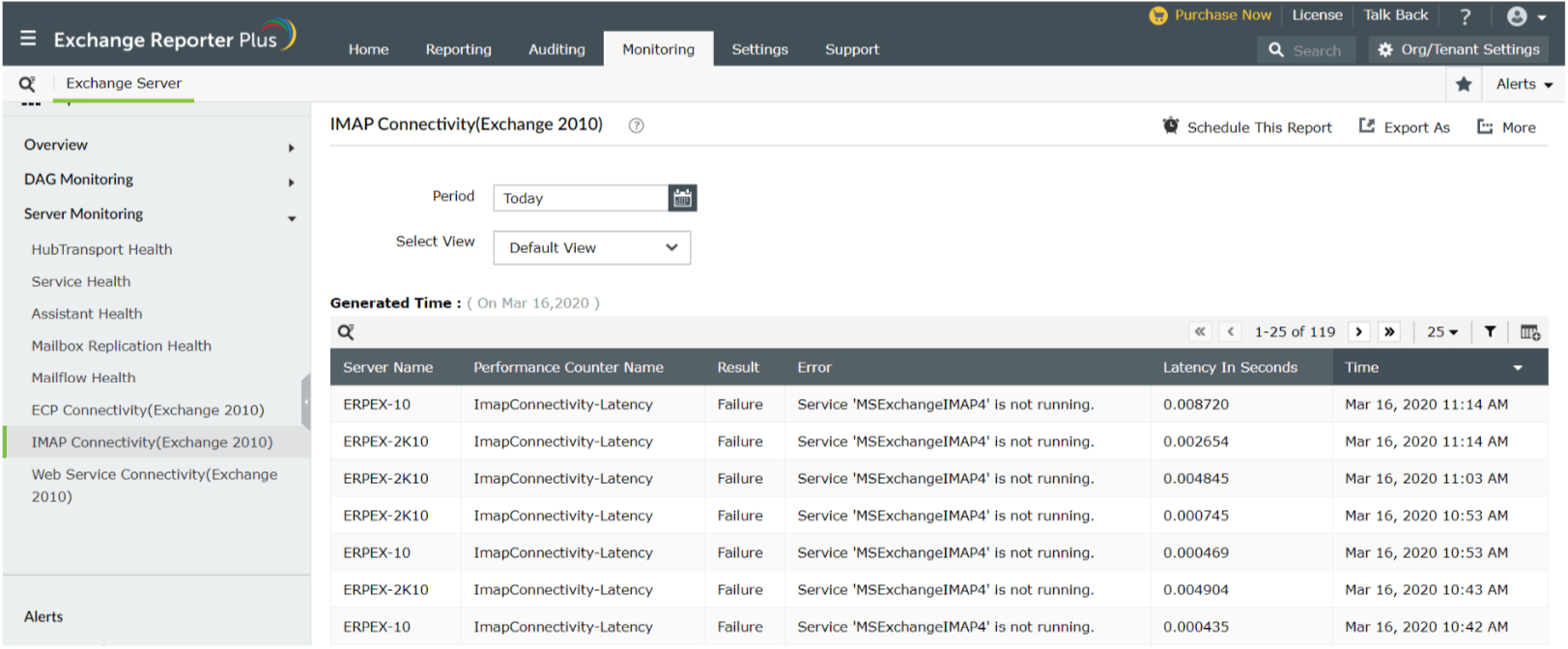Internet Message Access Protocol (IMAP) is an email protocol that stores a copy of the emails in your local machine in addition to the one stored in the email server. The Test-ImapConnectivity is used to test and verify if Exchange IMAP's working.
Example Test-ImapConnectivity cmdlet:
Test-ImapConnectivity -ClientAccessServer ExchServer1
This cmdlet can be used to test the IMAP connectivity for all mailboxes in the client access server named ExchServer1.
This cmdlet is simple and works well with Exchange 2010. But in later versions of Exchange you must use the Invoke-MonitoringProbe cmdlet to get the correct results. Exchange Reporter Plus, an Exchange reporting, change auditing and monitoring tool helps you monitor the IMAP connectivity 24*7 and raise alerts for important issues.
Steps to generate IMAP connectivity report in Exchange Reporter Plus:
Note: Exchange Reporter Plus uses Test-ImapConnectivity cmdlet only upto Exchange Server 2010. For later versions,the tool uses the Get-serverhealth cmdlet.
- Go to the Monitoring tab on the top pane.
- Navigate to Server Monitoring on left side.
- From the drop-down choose IMAP Connectivity report.
- Enter the period for report generation.
- Select the type of view in which you want the report to be presented. (Summary, default or custom view).

Why is Exchange Reporter Plus a good option?
- Report Scheduling: Schedule reports to automatically generate them and distribute them over email to concerned authorities such as IT admins and managers.
- Custom report features: Generate custom reports for different servers that needed to be tested and the data gathering time. Changing the criteria for report generation, automatically changes the parameter to be included in the cmdlet.
- Quick access and export options: Easily access reports by adding them to Favorite list and and export reports to different file formats such as PDF, HTML, XLS and CSV.
- Filter and alerting options: Add or remove columns from the report to view information relevant to your needs. Use advanced filters options to customize your search and configure alert profiles for specific actions to get real-time updates.
- Technician Delegation: Delegate report generation rights to different technicians. Have control over who gets access to what. You can also protect your reports with passwords.
- Easy-to-analyse reports: Generate reports on periodic basis, per domain basis, tenant-wise or get an overall summary as you choose. Get graphical and dashboard representation of complex analytical data.
- Log Forwarding to SIEM solutions: Integrate with ManageEngine's SIEM solution, Log360 to get actionable insights by correlating security events of Exchange with the event from rest of the network. Forward logs to other SIEM solutions such as Splunk and to other syslog servers for in-depth analytics.
Click here to learn more about how Exchange Reporter Plus helps substitute complex PowerShell scripts.